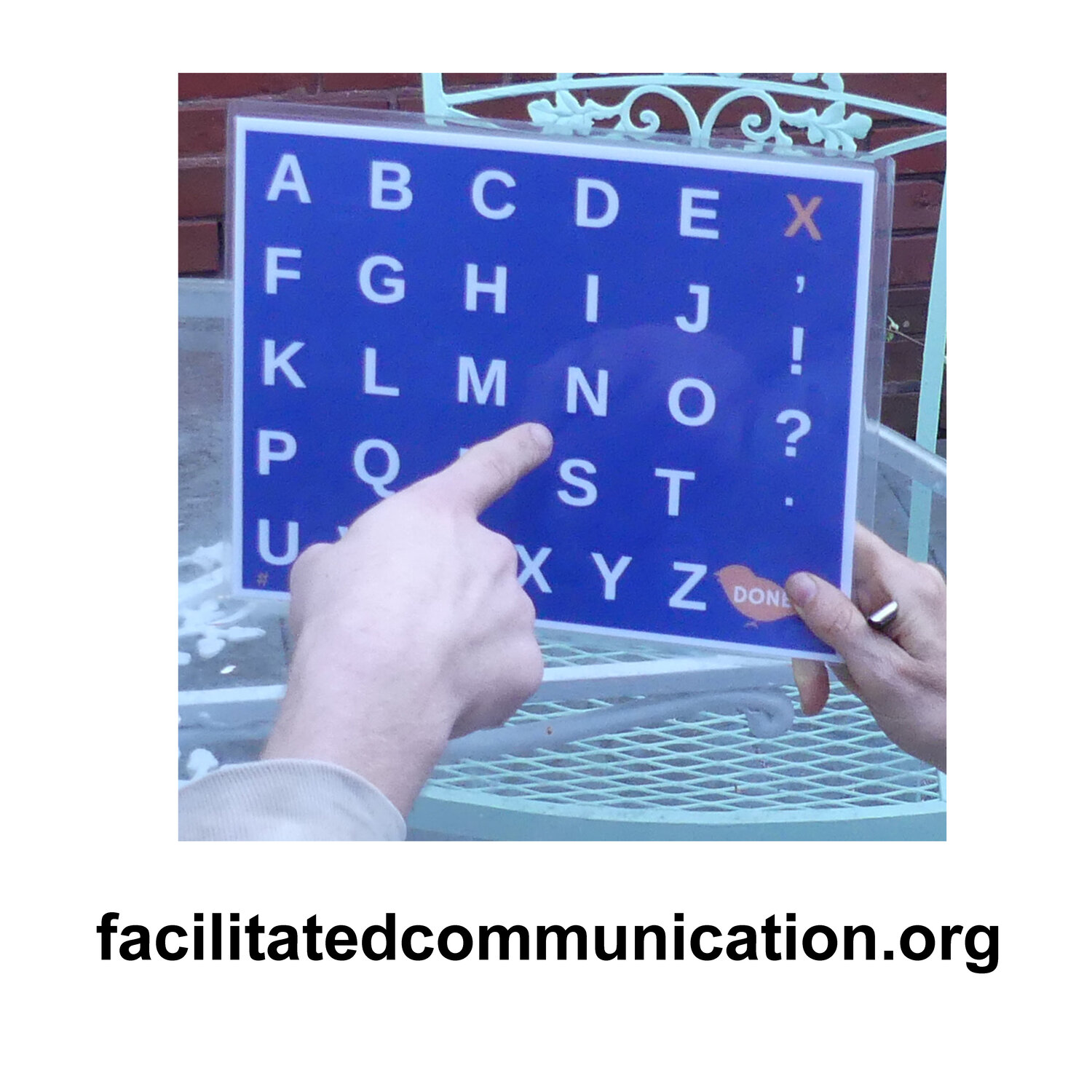Clever Stella (the Dog of Ms. Hunger)
Since its release early this month, How Stella Learned to Talk has already garnered more 5-star reviews than another book released last month by the same publisher (William Morrow). That other book would be the pro-FC I Have Been Buried Under Years of Dust. Just two weeks out, Stella has already broken 1000 in its Amazon sales rankings, a milestone that Dust hasn’t come close to.
But why am I comparing Stella and Dust? After all, Stella is a dog (the book’s subtitle is The Groundbreaking Story of the World's First Talking Dog), while the “I” of Dust refers to a 25-year-old women with autism.
No, I am not comparing autistic people to dogs.
Rather, I am comparing society’s eagerness to believe in facilitated communication with its apparently even greater eagerness to believe in a certain sort of animal communication. I’m referring, of course, to our eagerness to believe that our closest furry friends not only understand English, but have it in them to express themselves in English—if only someone were to give them the right sort of communication device.
That’s just what Stella’s owner, a certified speech-language pathologist named Christina Hunger, does for Stella. The device, with paw-sized buttons laid out on a plywood board, looks like this:
When Stella treads on a button (as we see in Youtube videos like this one), a recorded voice reads out the associated word.
In the many rhapsodizing articles and reviews the book has already occasioned—in the Chicago Tribune, the Philadelphia Inquirer, The Washington Post, the New York Post, Yahoo news, and elsewhere, a few questions go unanswered:
Can Stella actually read the words whose buttons she selects? Or does she select them merely based on their position on the board?
Does Stella pay enough attention to the buttons’ speech output to learn the spoken forms of the words? If Ms. Hunger says “eat”, does Stella connect the sound of the word “eat” with the “eat” button?
Has Stella actually learned word meanings? In other words, does she know the meaning of the printed word “eat”, and/or the oral word “eat”, and/or the button in the middle of the top row above the “eat” label?
In other words, when Stella pushes the “eat” button, does she have in mind the general, definitional notion of eating—or just a situational anticipation of being fed?
What about when her owner says “eat” or pushes the “eat” button? Does that cause Stella to form a mental representation of the concept of eating?
Might Stella have simply learned to associate pushing certain buttons—the button in the middle of the top row, the button in the middle of the next row, the top two buttons on the right-hand side, …—with obtaining certain satisfying responses?
What about “love you?” Does Stella know what “you” and “love” mean? Does she know that “you” refers to whoever is being addressed by whoever is currently speaking? Does she know that “love” refers to an emotional state?
What is Stella’s communicative intent? What propels her to push buttons? Is she doing anything more than trying to get her wants met? Is she commenting, asking questions, making conversation?
When Stella paws “bye Stella bye good outside” after returning from the beach, is she really, as Ms. Hunger puts it, “comment[ing] on what she did”? What would be her motivation in doing so? Do dogs like to reminisce?
Has Stella learned any linguistic structures—e.g., the patterns of English word order? When she paws “bed outside eat” is she communicating something different from when she paws “bed eat outside”?
How much of all this is merely random or semi-random button pushing that a well-intentioned and emotionally invested care giver can’t help investing with meaning?
Has Ms. Hunger ruled out the possibility that she is subtly and unintentionally cuing Stella to push certain buttons? [1]
What happens when Ms. Hunger leaves Stella with a dog sitter? Does Stella still paw out messages in Ms Hunger’s absence?
In other words, to what degree has Stella learned to independently and intentionally formulate linguistic concepts in order to express wants, feelings, and reminiscences?
And to what degree has Stella simply learned that certain buttons in certain positions on a plywood board, perhaps in conjunction with certain cues from her owner, are associated with certain concrete consequences?
Ms. Hunger feels she has an important message for dog owners: your dog wants to communicate with you, and you can teach her how. Indeed, other dogs are following Stella’s path. One of them is Bunny, who already has 6.5 million followers on TikTok.
But, in our zeal to get our dogs to talk to us (and to show this off to others), might we be ignoring more meaningful, intentional ways in which dogs clearly do communicate: through barks and whimpers, body language, posture, and smell?
And might we be doing better by our furry friends if, rather than trying to get them to learn English (or Spanish, or Chinese, or Swahili), we spent more time trying to make sense of the communication systems that come most naturally to them?
1. How Stella Learned to Talk makes zero mention of other famous talking animals—for example, Clever Hans—and how their trainers can unwittingly cue them, and how their communication skills tend to vanish when their trainers leave the scene.


